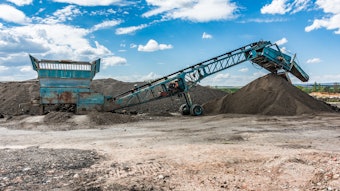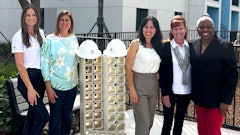
Within our national parks, pavement preservation, especially chip seal and micro surfacing, has been a good option for maintaining infrastructure assets — from a budgetary and green point of view.
“The biggest advantage for most agencies is that pavement preservation extends budgets; for the most part, sustainability is a side benefit. For national parks, however, it is a primary benefit,” Luedders says. “National parks’ major concerns are the environment and the visitor experience. We are always providing information to them on the sustainable benefits of pavement preservation and how quickly the work can be completed.”
In addition to the normal eco-friendly aspects to pavement preservation, national parks require special steps to be taken as part of their preservation projects. For instance, in most chip seal projects, loose aggregate can be swept to the side of the road. But in national parks, it must be swept and hauled off the park’s land because the stone is not native to the ecology. “Once the excess chips are vacuumed up, they’re taken to another location,” says Luedders. “The contractor can then sell them to homeowners, or if they are cleaned up and meet specification, they can be reused on the roadway.”
Price explains that other national parks requirements include taking special care with emulsions to keep them only on the road surface and off of curbs, rocks and greenery. “We have to be careful transferring from the transport trucks to the spreaders, and also ensure that aggregate and emulsions stay out of storm drains and water sources such as rivers, lakes and streams. You have to know where the stormwater goes every inch of the way and watch the weather,” he says. “You can’t lay an emulsion if there’s going to be a thunderstorm.”
Overspray of asphalt onto historic features is another concern, according to Luedders. In some national parks, even the stone curbing is considered historic, and must be covered with tape or protective paper. These requirements are typically written into the job specifications.
“With national parks jobs, we conduct preconstruction meetings to help employees remember that the environment is a top priority,” Price says. “But in general, we try to make the environment a priority everywhere we work. We don’t like upsetting anyone, whether they’re homeowners or agencies.”
Luedders agrees. “From a PR standpoint, for any such project, it’s a good idea to emphasize the sustainable nature of pavement preservation. It gets the public behind the projects, as opposed to only looking at the cost as a reason to preserve,” he suggests.

![Img 1707[56]](https://img.forconstructionpros.com/files/base/acbm/fcp/image/2023/04/IMG_1707_56_.6437076c97961.png?auto=format%2Ccompress&fit=crop&h=191&q=70&rect=0%2C462%2C1920%2C1080&w=340)
















![Glp Porsche 072723 465 64ee42287c29e[1]](https://img.forconstructionpros.com/files/base/acbm/fcp/image/2024/03/GLP_PORSCHE_072723_465.64ee42287c29e_1_.65e88b8589b9c.png?auto=format%2Ccompress&fit=crop&h=135&q=70&rect=0%2C520%2C2250%2C1266&w=240)







